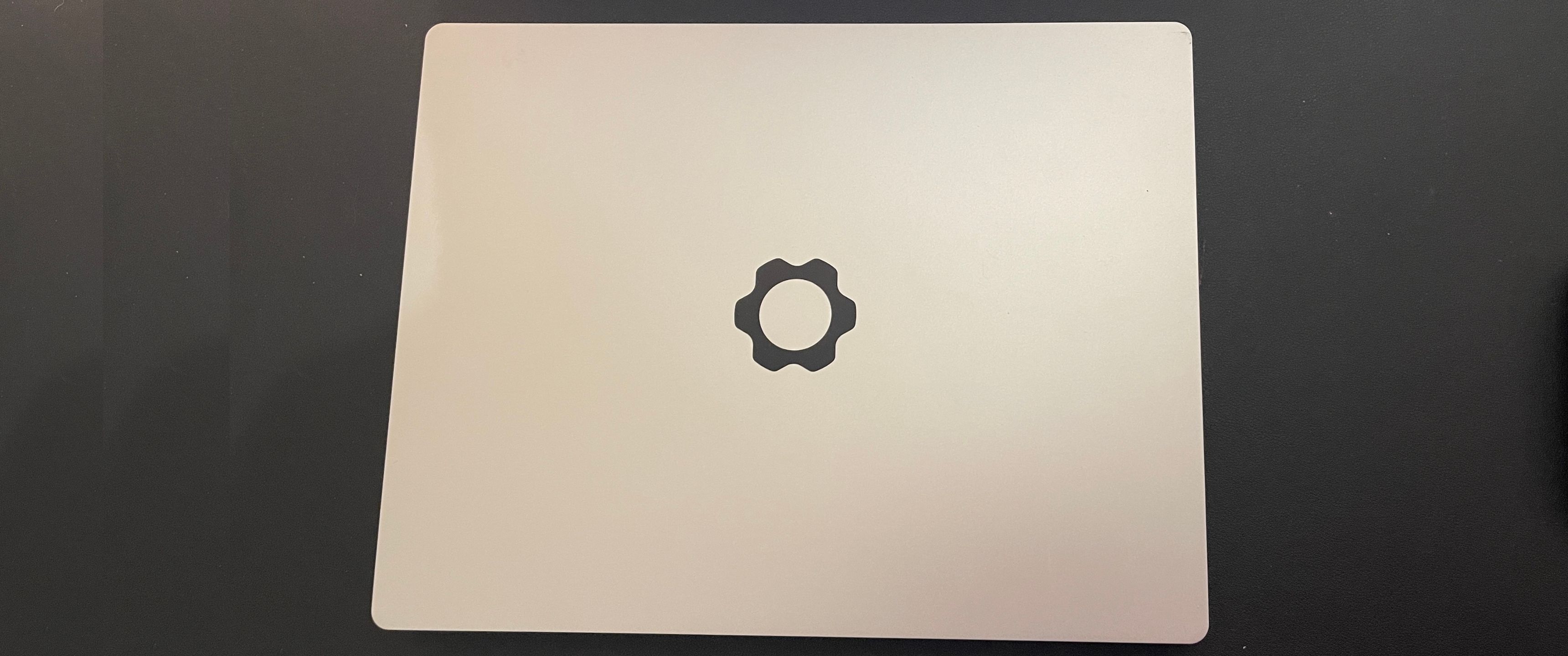Our Verdict
The Framework is proof that you can build a laptop that’s designed to last without having to compromise on style and performance. This machine is perfect for anyone who wants a powerful machine straight out of the box with the option to upgrade and repair later down the line. Its modular design means users can easily change and upgrade everything from the screen bezel to the motherboard and ports, even if they don't have great technical skills. The 13.5-inch screen with a 3:2 aspect ratio makes this a great choice for document work and coding. It can easily handle multiple apps, but content creators who work primarily with video editing may need something a bit more powerful.
For
- Easy to upgrade and repair
- Cool looking design
- 3:2 screen looks good
Against
- Poor battery life
Why you can trust Creative Bloq
CPU: 12th Gen Intel Core, i7-1185G7 (12M Cache, up to 4.80 GHz)
Graphics: Iris Xe Graphics
RAM: 32GB DDR4-3200
Screen: 13.5 inch
Storage: 1TB
Ports: Support for USB-C, USB-A, HDMI, DisplayPort, MicroSD
Size: 296 x 229 x 15.85 mm
Weight: 2.87lbs
Imagine buying a laptop that wouldn’t need to be replaced every time there was a new upgrade. Well, that dream is now a reality thanks to Framework, who are changing the way we consume technology.
This really is one of the most exciting laptops on the market at the moment. Its thin, lightweight frame has a modular design that can be repaired and upgraded from the comfort of your own home, even if you lack technical skills. There are two different options to choose from when purchasing the Framework, you can opt for the pre-assembled model with three different configuration settings or a DIY edition.
Framework has also carried through its commitment to sustainability with its use of high-quality, eco-friendly materials. In fact, it has one of the highest levels of recycled content found in any consumer electronics product.
This machine has been purposefully designed with work in mind. I tested out the pre-assembled Professional model which boasts a 13.5-inch 3:2 aspect ratio screen, an Intel Core 12th Gen 1.7 processor, 32GB of RAM, and 1TB of storage, making it an excellent option for programmers, coders, and anyone who works with documents and wants a reliable day to day laptop. I’ll go into more details about Framework’s design, specifications, and performance later in the review but if you're in the market for a new Windows laptop, you might also want to check out our roundup of the best Windows laptops.
I tested this machine by using it as my main laptop for a couple of weeks. I used it for document creation, general web browsing, and Zoom calls as well as using it to edit photos. I also took it out and about with me to see how portable it is and how well the battery held up. If you want to know more, check out our guide on how we test laptops.
Framework review: design and display
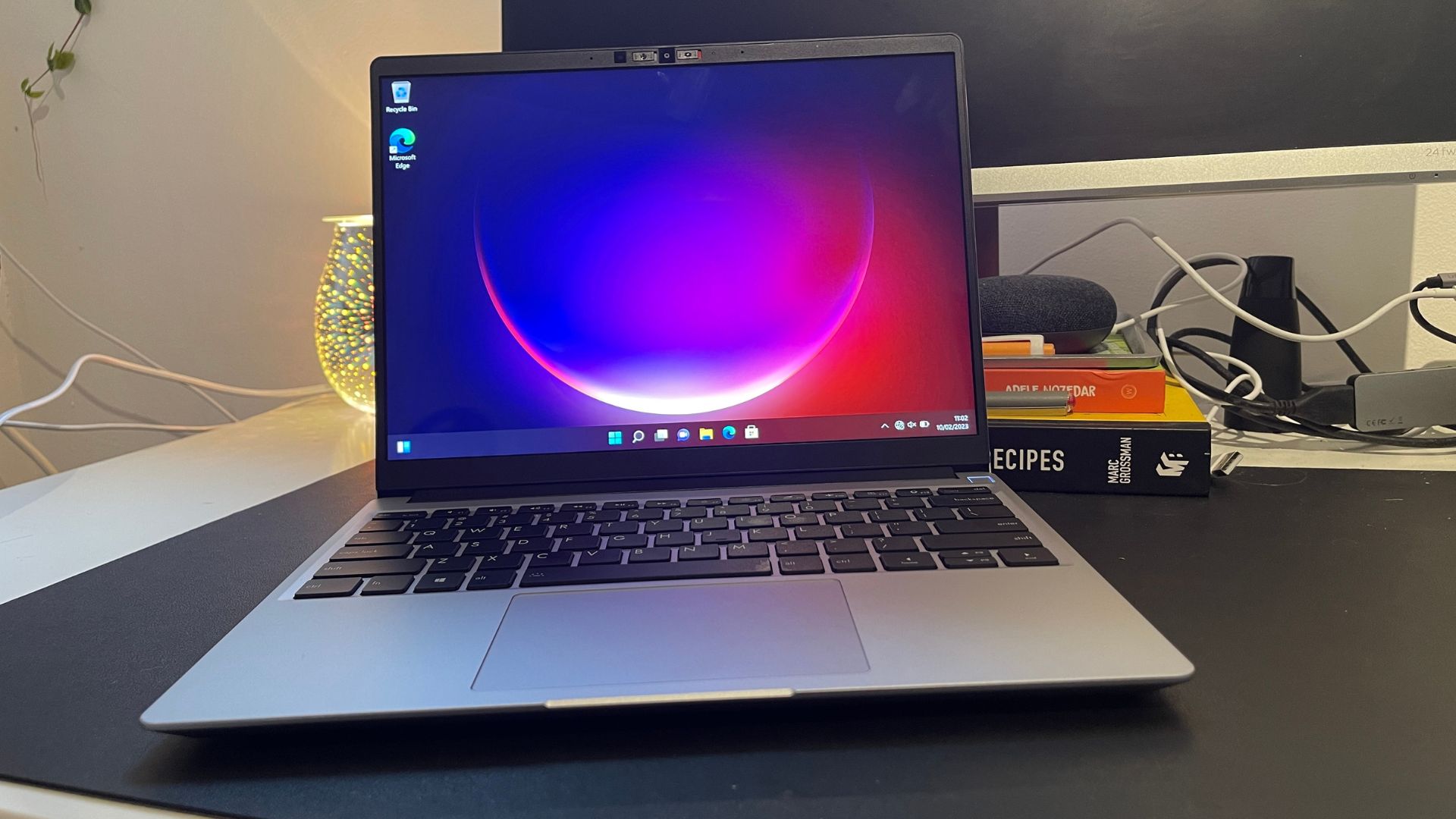
This sleek and lightweight laptop looks much like any other laptop of its class on the market today. It weighs in at just 2.87 lbs, proving you don’t need to comprise on size when it comes to creating an upgradeable product. Its slender frame also hosts four port slots as well as a 3.5mm combo headphone jack.
Framework has really doubled down on the eco-friendly aspect of this machine. Because aside from embracing the right to repair, they’ve also made the enclosure from 50% post-consumer recycled aluminium, used an average of 30% post-consumer recycled plastic for the contents as well as ensuring fully recyclable packaging.
And don’t let its skinny good looks fool you, this is a really solid machine. Considering it’s been designed to be taken apart, you’ll experience very little flex in either the screen or the keyboard.
Talking of the keyboard, it’s super comfortable to type on, it has a generous 1.5mm travel so if you’re a bit heavy-handed when you type, you’ll find it a perfect fit. The keyboard is also backlit so you can work late into the night with ease. It’s also worth noting that replacement keyboards can be ordered in different languages and layouts so if you’re not happy with the standard one, you can swap it out. The touchpad is ideally positioned in the centre, it’s large and very responsive making it a joy to use.
The display is a really nice screen to look at. It’s 13.5 inches and has a 3:2 aspect ratio with a 2256 x 1504 resolution. This screen is ideal for productivity, the extra height means you can see more of the document or website you’re working on and there’s less scrolling.
The wide viewing angles and sharp, crisp colours meant that using the screen to stream Netflix was a pleasant experience. I tried it out by watching Only Murders in the Building which is quite a dark show (in terms of shooting style, although, it is about murder so I guess you can take that literally too) and the colours were vivid and stood out while the blacks were dark and sharp.
The screen also gets pretty bright, achieving around 420 nits, it’s certainly bright enough to handle most lighting situations, including outdoor light, which is perfect for when you want to work in the garden during the summer.
Framework review: features
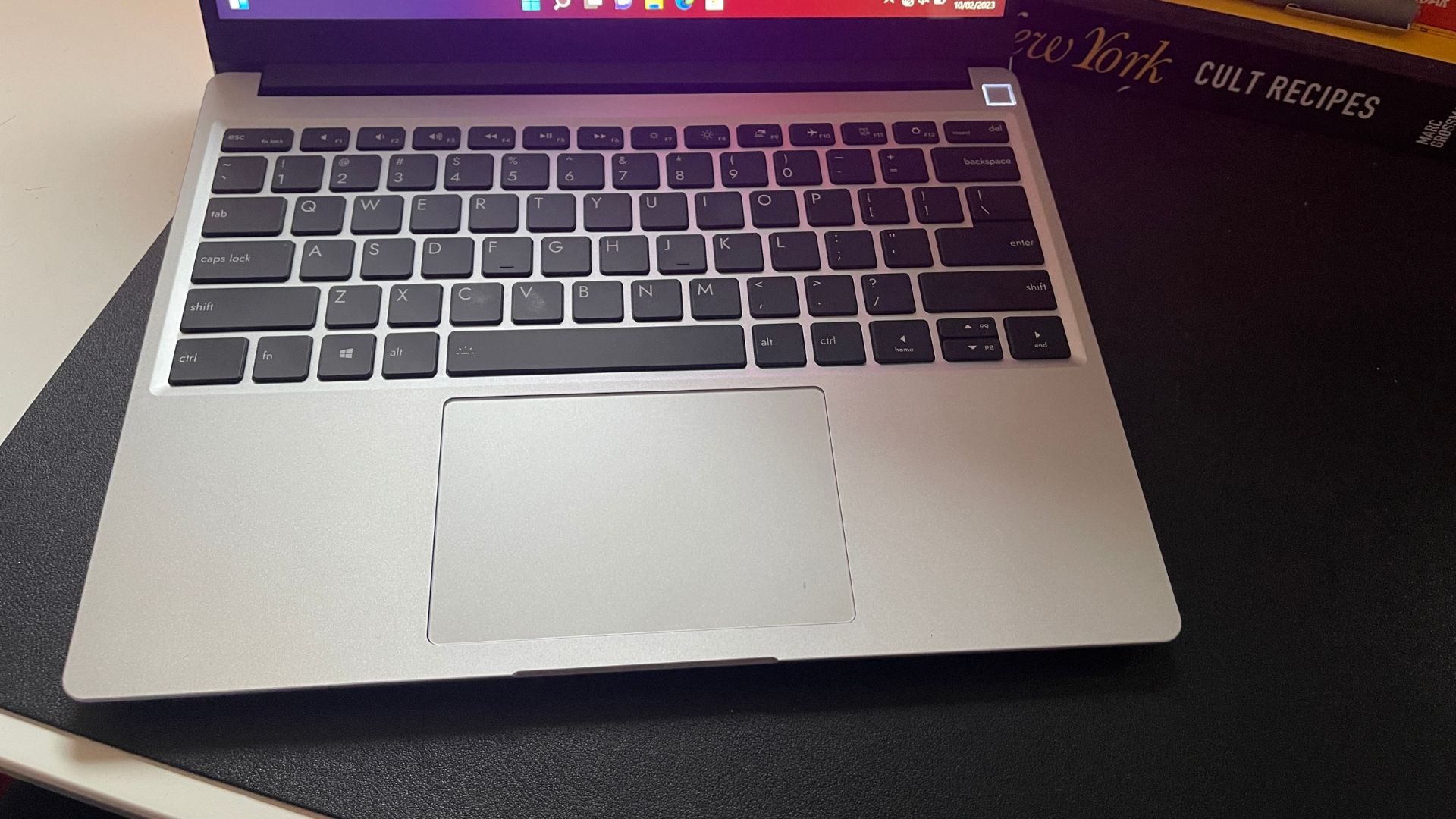
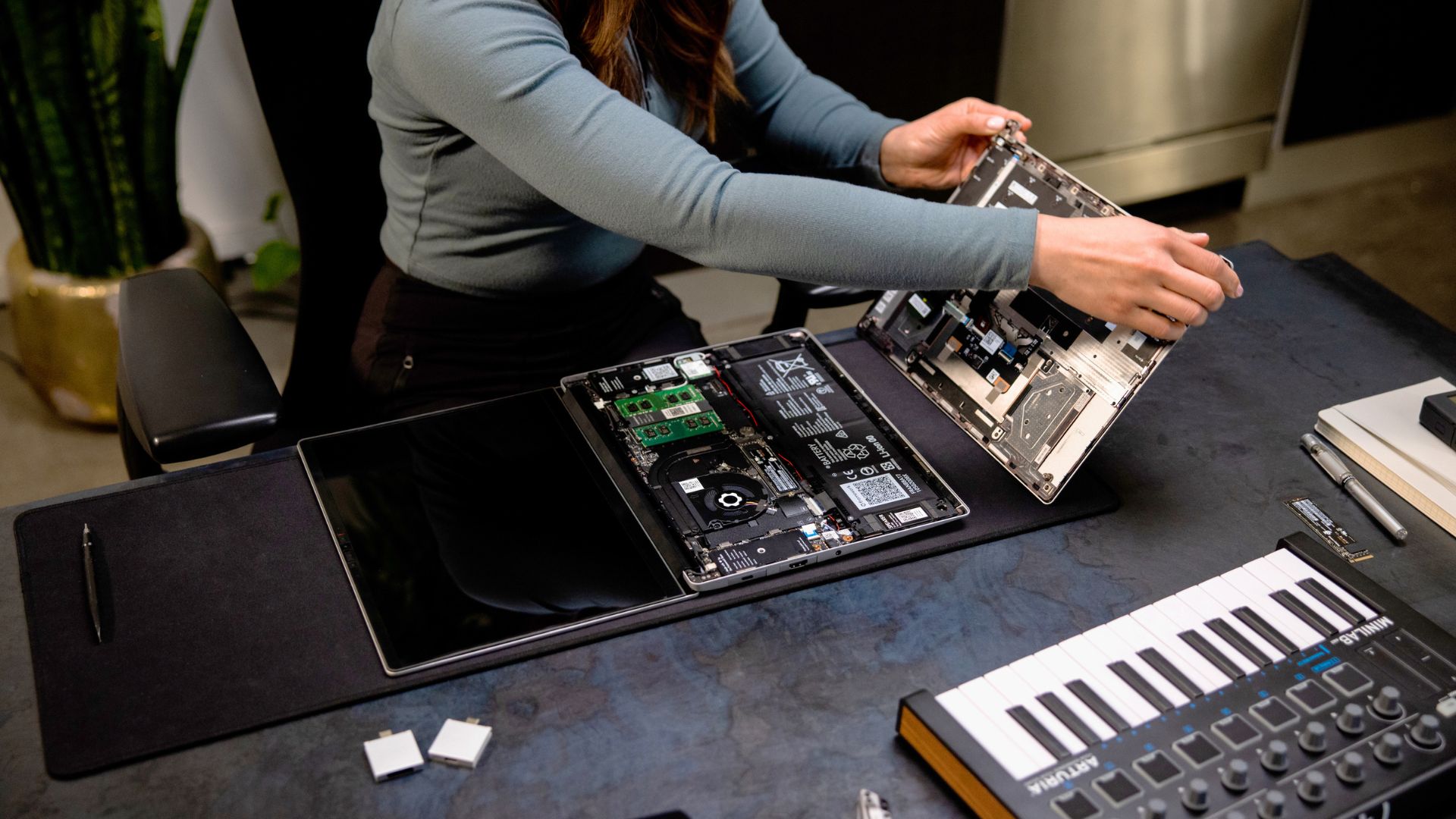
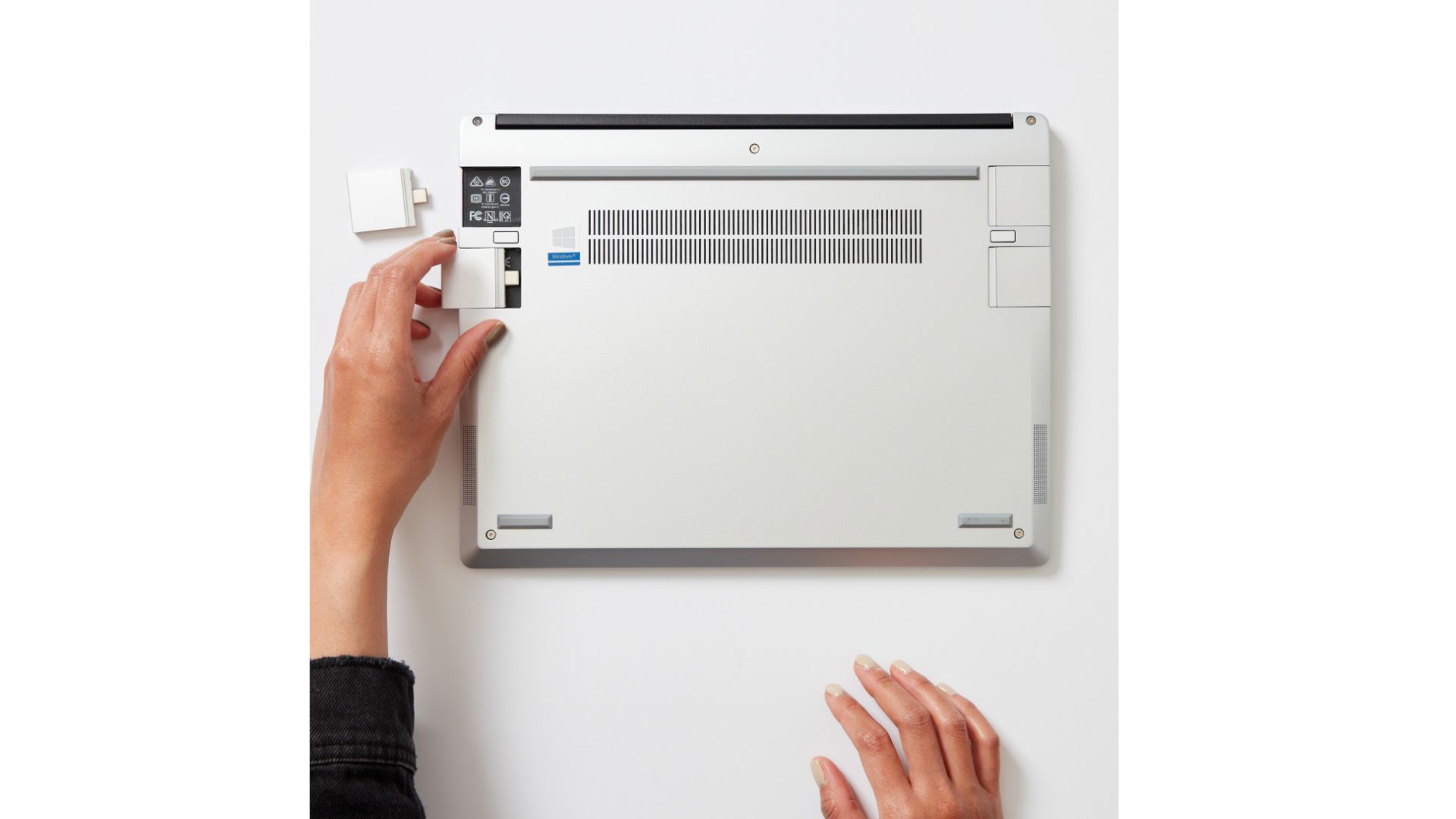
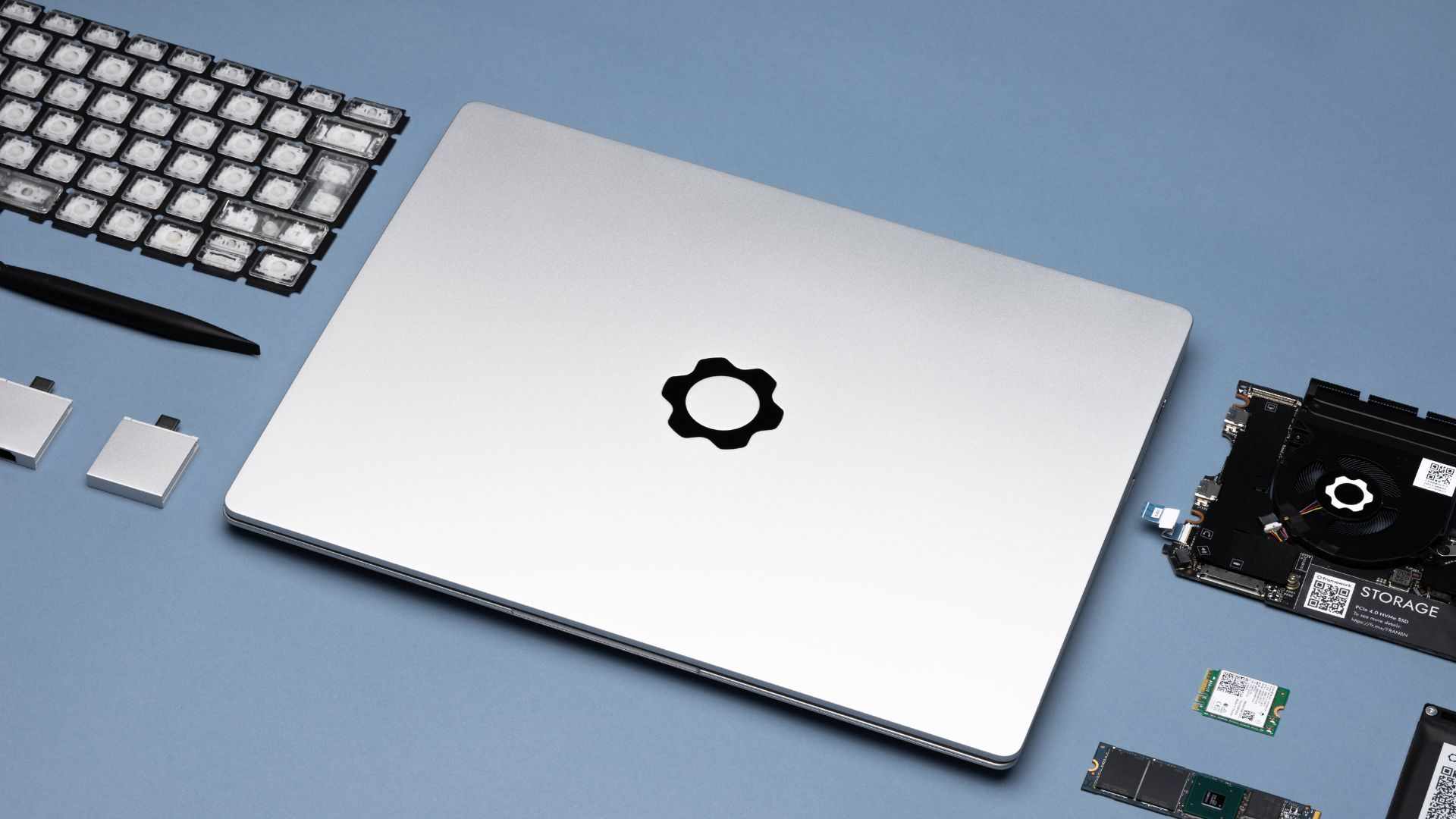
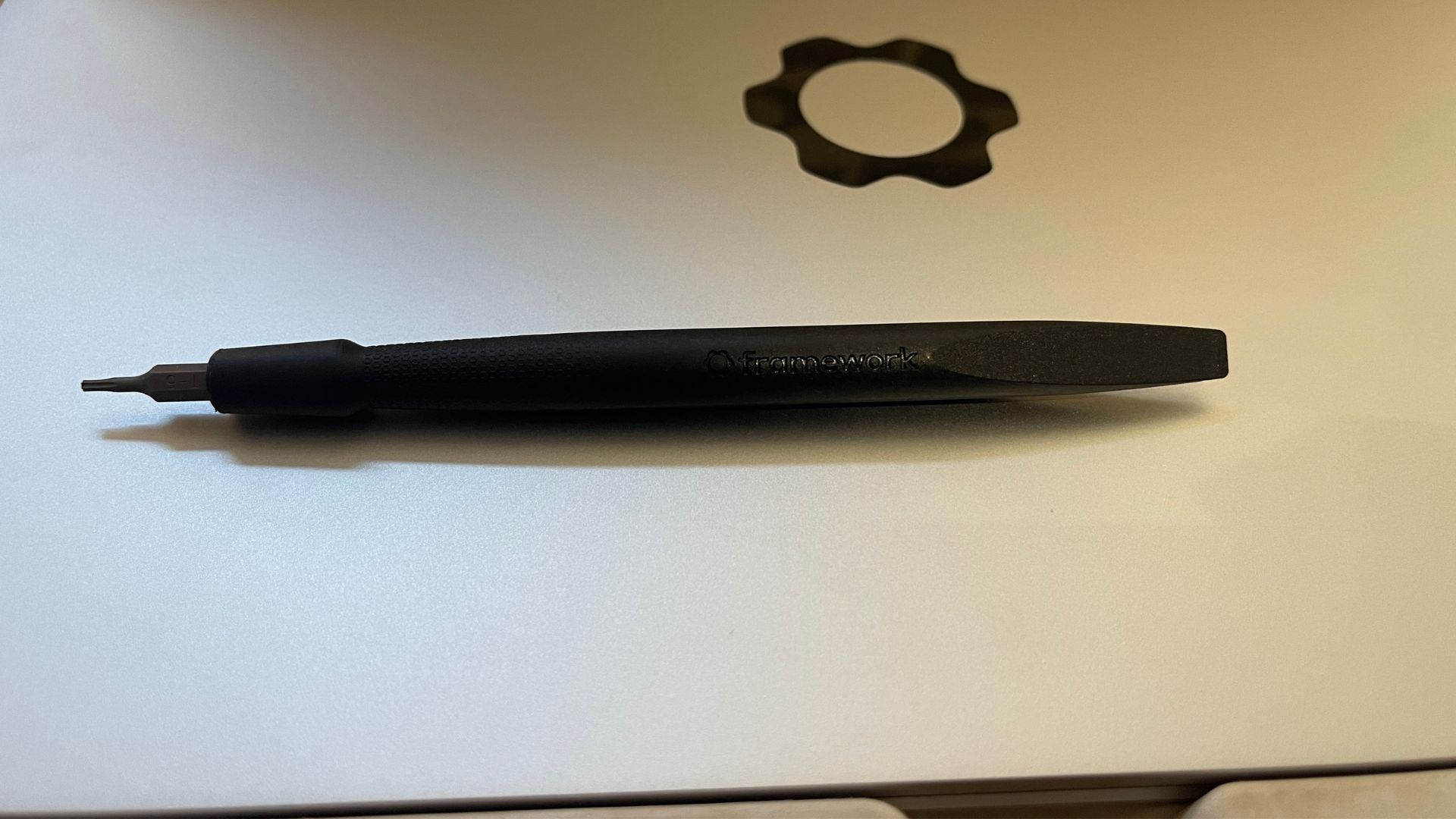
When it comes to features, the main star is that this machine is completely customisable. Everything from the bezel colouring to the ports. Whatever your ideal laptop is, you can configure this machine to achieve it. And it doesn’t even matter if you change your mind six months down the line, because it’s easy to change without having to buy a whole new machine.
The machine houses four user-selectable expansion cards. You can choose between USB-C, USB-A, HDMI, DisplayPort, MicroSD and Ethernet. You can have multiple of the same kind or mix and match - whatever works for you, works for your Framework machine. It’s super simple to swap these out too, you don’t need any fancy tool, they just slot in and out, so you can even do it when you’re on the move.
And it’s not just the ports that can be changed. Every single part of this machine can be changed, repaired and upgraded. Whether you want to upgrade the main CPU or the memory - it can be done. And the way that works is that each part has its own individual QR code. You scan that code, and you’re taken to the marketplace where you can not only buy the part, but it’ll provide you with a step by step video instructions on how to change it. This is all done by you, you don’t have to struggle to get to a genius bar and have some “expert” take your computer away for weeks just to change one little thing, and you don’t have to pay through the nose to get one simple upgrade. It’s fast, it’s affordable and it can be done by anyone. And for those without huge technical abilities, that really is such a revolutionary concept. Plus, it ships with a handy tool to tackle every screw on the machine.
When it comes to audio, this machine has two 2-watt speakers, these won’t change your life, but they are pretty good considering this is a laptop. I used the machine to watch tv shows and cycled through a couple of '90s pop tracks on Spotify using the very high settings and found the volume to be adequate and the vocals clear, although the bass did sound a little tinny.
The Framework also has two microphones and a 1080p webcam that works at 60fps. Both the microphone and the webcam can be switched off using the hardware privacy switch on the top of the bezel. There’s no LED light to notify you when these are muted, but when they are switched off, there’s a red tab to notify you. The webcam is pretty decent for a laptop, whilst trying it out on zoom, I found that the images were sharp and clear, although the white balance did struggle if I used it near a great source of light. But for casual meetings or to video call relatives, it’s perfectly fine.
There is also a fingerprint reader, which works really well, not once did I have to jiggle my finger around to get it to recognise my print. The one thing it does lack is an IR camera for facial recognition, but with Framework continuing to develop its machine, this could be something included in the future.
Framework review: performance
Here's how the Framework Professional mode (2023) performed in our suite of benchmark tests:
Cinebench R23 CPU: Single-Core: 1,742; Multi-Core: 10,448
Geekbench 5: Single-Core: 1,233; Multi-Core: 7,365
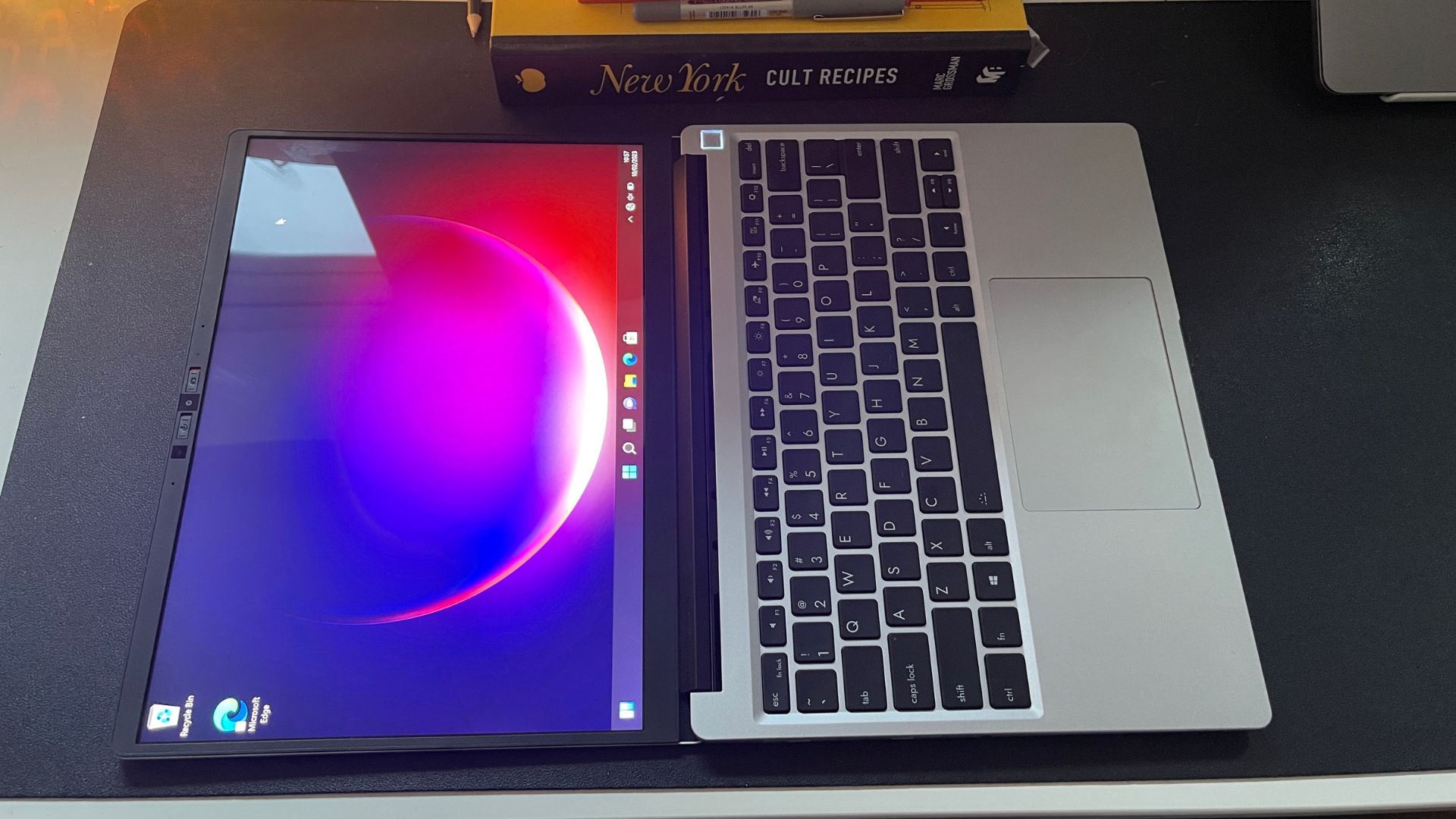
How well this machine performs will depend on the type of configuration you opt for. I tested the pre-built, Framework Professional model which has a 12th Gen Intel Core, i7-1185G7 processor, Iris Xe graphics card, 32GB of DDR4 RAM and 1TB of storage space.
I was really impressed by how well it performed. I used it mostly for document creation, surfing the web, streaming content and a bit of photo and video editing, so certainly handled intensive CPU tasks with ease. It also did really well when multitasking, I’m notorious for having multiple apps, browsers, tabs and programs open all at the same time, but it worked well even when under extreme pressure. The fans made minimal noise and it stayed cool and didn't overheat making it perfect for use on my lap when working in front of the tv.
This isn’t a gaming machine at all, I did download Civilization VI but found it slow and laggy, running some benchmark tests showed it only reached a paltry 24fps. So avid gamers, it’s not for you, but then it’s not been designed for gamers, well, at least not THIS model.
I also ran some other benchmark tests, Geekbench 5 came up with a score of 1,233 for single-core and 7,365 for multicore workloads, while Cinebench R23 recorded 1,742 single-core and 10,448 for multi-core.
Framework review: Battery life
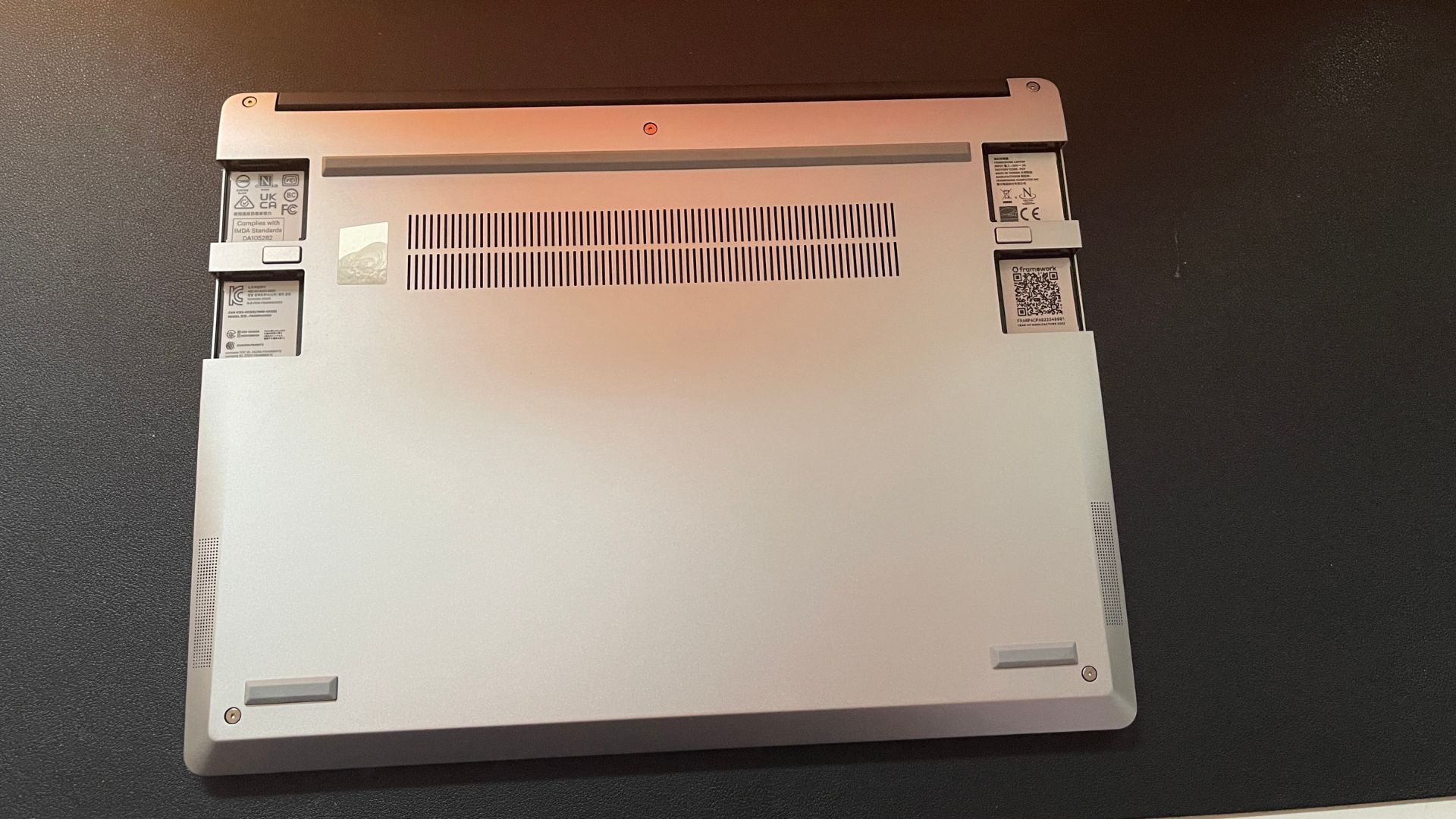
The battery is the only thing I found a little disappointing with this machine. With the screen set to around 60% brightness, I found it only lasted around six hours. So not good enough to see you through an entire 8-hour working day. Although that being said, it does charge quickly, only taking around two hours to fully charge from a completely flat starting point. It also charges via USB-C, so make sure that you have at least one of your ports set to USB at all times, especially if you’re travelling with the machine as it’ll make charging it up a lot easier.
Framework review: price
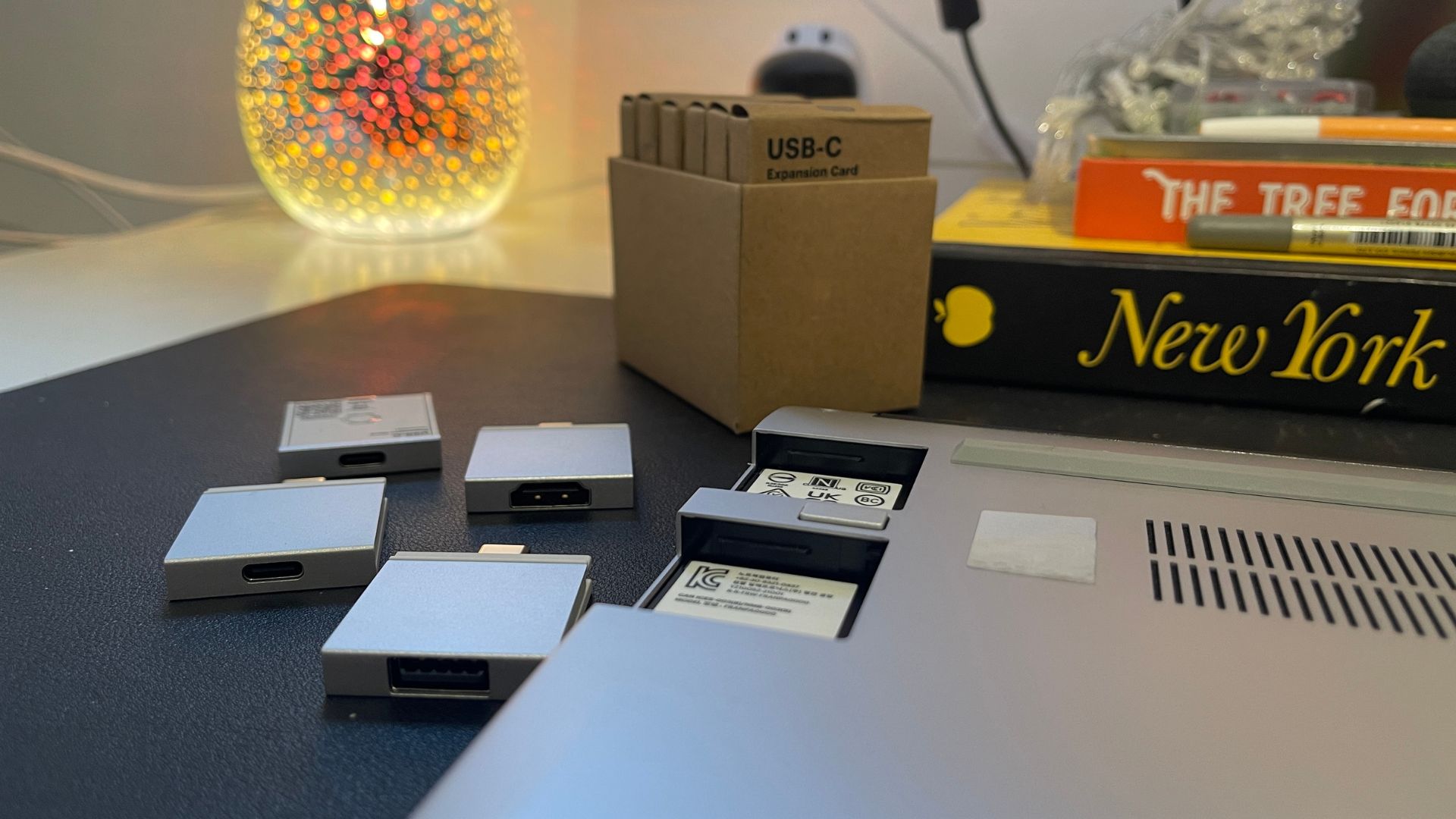
The Framework comes in three different pre-built models with prices starting at $1,049/£1049 and a DIY edition which is cheaper starting at $819/£819.
The Base model which has 12th Gen Intel Core i5-1240P, 8GB RAM and 256GB storage is priced at $1049/£1049. Meanwhile, the Performance model, which has 12th Gen Intel Core i7-1260P, 16GB RAM and 512GB storage space, will set you back $1,449/£1,449. The Professional, which is the model I tested, has 12th Gen Intel Core i7-1280P, 32GB RAM, 1TB of storage space and costs $2,049/£2,049.
The Base and Performance models come pre-installed with Windows 11 Home, while the professional model comes with Windows 11 Pro. If you’d prefer Luinx then the Framework Laptop works out of the box with Ubuntu 21.04 and Fedora 34.
When going through the configuration process, you’ll automatically have four USB-C ports selected as standard. You have four ports, so you need to ensure you select which four you’d like. These cost $9/£9 each for the USB-A and USB-C then $19/£19 for DisplayPort, MicroSD and HMDI. The Ethernet costs $39/£39. Meanwhile, additional storage space will set you back $69/£69 for 250GB and $149/£149 for 1TB.
There’s also the option to buy a DIY edition which costs $819/£819, this is for users who want a more complex customisation. Users can choose from a broader set of memory, storage, WiFi, and operating system options or choose to bring their own.
Should you buy the Framework?

Absolutely. If you want a machine that you can rely on to get the job done then this is the one. It’s ideal for a range of tasks from document creation to photo and video editing.
Its sleek, lightweight frame has tons of potential. The changeable ports are more than just a gimmick, they are really useful, especially if you swap and change your workplace as I do. Having the option to switch out the HMDI port for the MicroSD port when I wasn’t needing to use my monitor was so useful. Plus, knowing that if something breaks or if I fancy a boost to my memory or speed, it doesn’t mean buying a whole new machine, just a part, is really reassuring. It’s even more reassuring knowing that I can buy that part and fix it myself, even though I’ve no clue when it comes to putting together a computer. And, of course, those who are more technically capable can choose the DIY edition and have all the tools they need to build their ideal machine.
Everything about the Framework is brilliant. It’s really comfortable to use, ideal for carrying around and if you keep on top of upgrades then it’s a laptop for life.

Thank you for reading 5 articles this month* Join now for unlimited access
Enjoy your first month for just £1 / $1 / €1
*Read 5 free articles per month without a subscription

Join now for unlimited access
Try first month for just £1 / $1 / €1
out of 10
The Framework is proof that you can build a laptop that’s designed to last without having to compromise on style and performance. This machine is perfect for anyone who wants a powerful machine straight out of the box with the option to upgrade and repair later down the line. Its modular design means users can easily change and upgrade everything from the screen bezel to the motherboard and ports, even if they don't have great technical skills. The 13.5-inch screen with a 3:2 aspect ratio makes this a great choice for document work and coding. It can easily handle multiple apps, but content creators who work primarily with video editing may need something a bit more powerful.

Craft, photography and hardware writer Rachael Penn has written for The Evening Standard, The Independent, Fit&Well, The Radar, T3, and TopTenReviews. She also writes on many other subjects, including lifestyle, travel, food, internet culture and eco-living for online and print publications.
